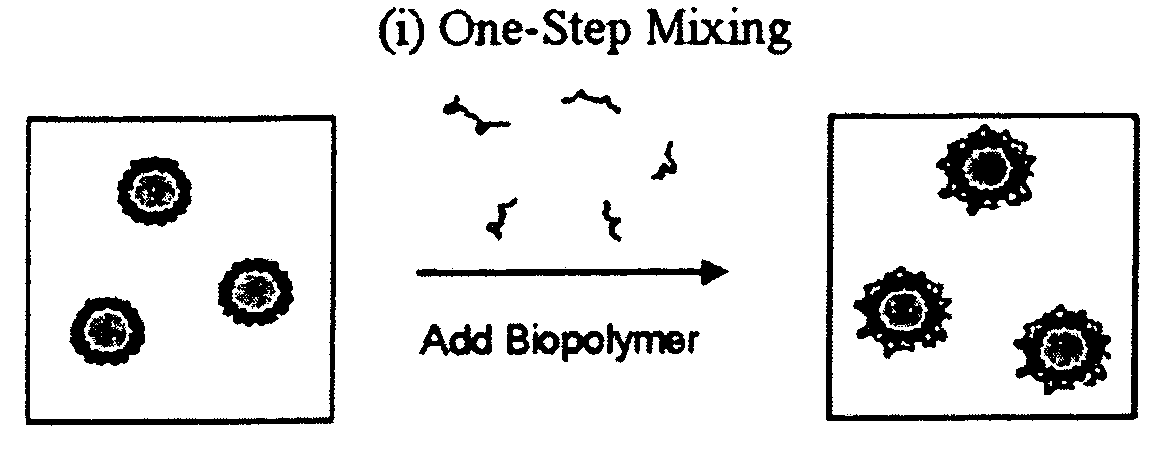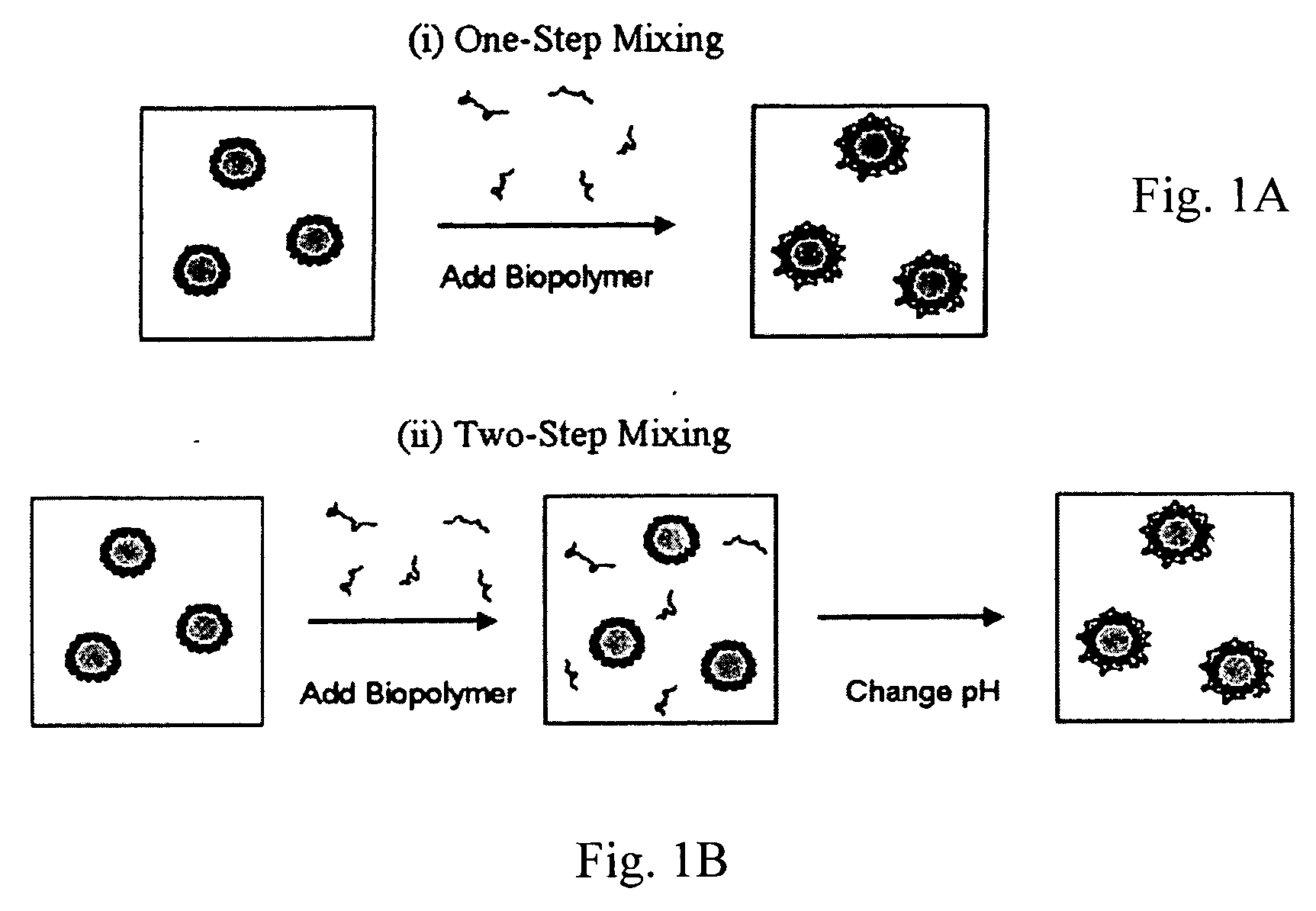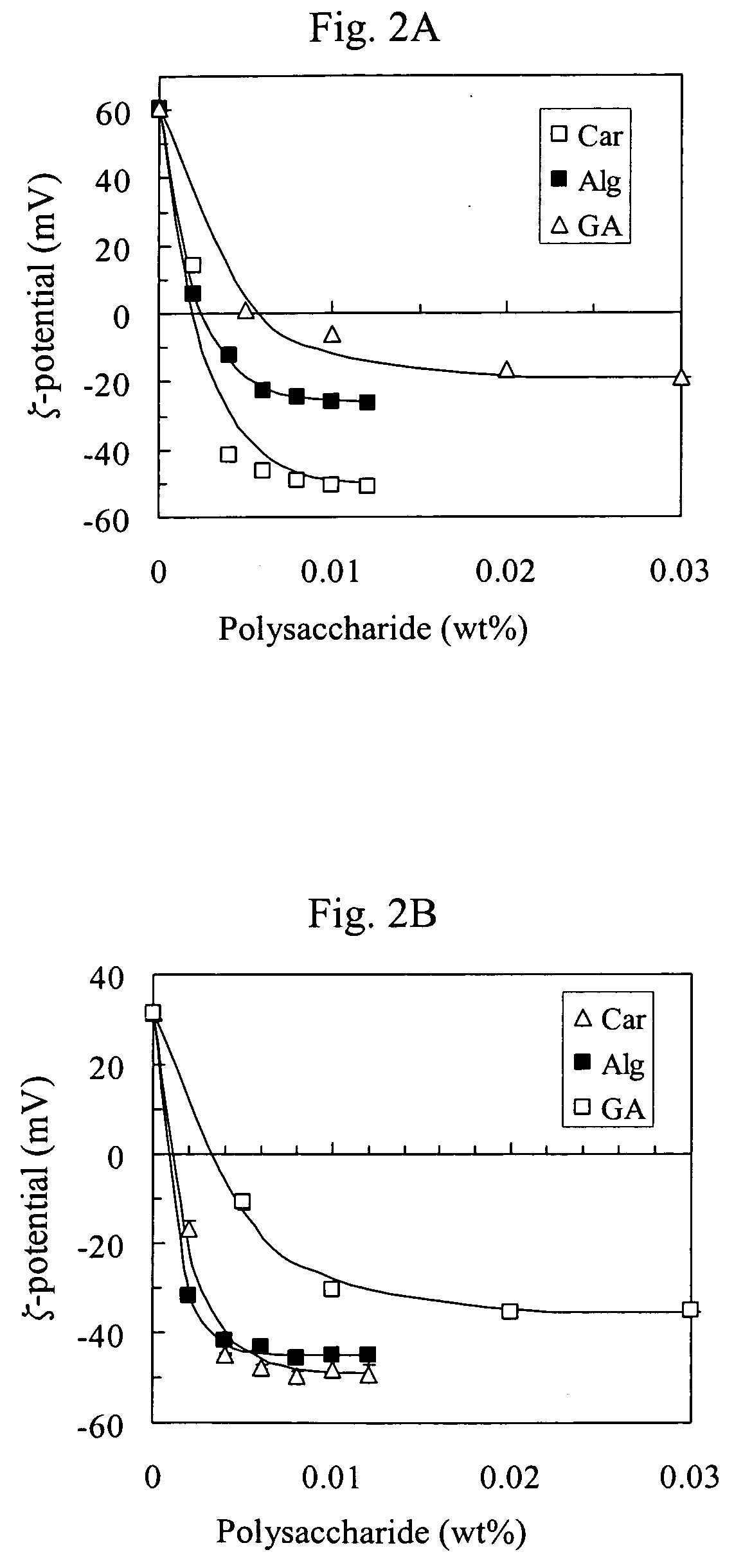Stable acidic beverage emulsions and methods of preparation
a technology of acidic beverage and emulsion, which is applied in the field of stable acidic beverage emulsion and method of preparation, can solve the problems of thermodynamically unstable system of beverage emulsion, relatively low surface activity, and necessitating use in a relatively high amoun
- Summary
- Abstract
- Description
- Claims
- Application Information
AI Technical Summary
Benefits of technology
Problems solved by technology
Method used
Image
Examples
example 1a
[0060] A tertiary emulsion was prepared with a composition of 0.5 wt % corn oil, 0.1 wt % lecithin, 0.0078 wt % chitosan, 0.02 wt % pectin, and 100 mM acetic acid (pH 3.0). Prior to utilization, any flocs formed in this emulsion were disrupted by passing it twice through a high pressure value homogenizer at 4000 psi. A series of dilute emulsions (˜0.005 wt % corn oil) with different pH (3 to 8) and ionic strength (0 or 100 mM NaCl) were formed by diluting primary, secondary and tertiary emulsions with distilled water or NaCl solutions and then adjusting the pH with HCl or NaOH. These emulsions could be analyzed directly by laser diffraction, particle electrophoresis and turbidity techniques without the need of further dilution. The diluted primary, secondary and tertiary emulsions were then stored for 1 week at room temperature and their electrical charge and mean droplet diameter were measured.
example 1b
[0061] Affect on Droplet Charge—Primary Emulsions. The ζ-potential of the droplets in the primary emulsions was negative at all pH values, but was appreciably more negative at high than at low pH (FIG. 4). The droplet charge was probably less negative at low pH because a smaller fraction of the adsorbed lecithin molecules were ionized, since the pKa value of the anionic phosphate groups on lecithin is around pH 1.5. The magnitude of the electrical charge on the droplets in the primary emulsions decreased upon the addition of salt, e.g., the ζ-potential changed from −42 to −13 mV at pH 3 when the NaCl was increased from 0 to 100 mM. This reduction can be attributed to electrostatic screening effects, which cause a reduction in the surface charge potential of colloidal particles with increasing ionic strength.
example 1c
[0062] Affect on Droplet Charge—Secondary Emulsions. The ζ-potential of the secondary emulsions was highly positive (˜38 mV) at pH 3 due to adsorption of cationic chitosan molecules onto the surface of the anionic lecithin-coated droplets. As the pH was increased the electrical charge on the droplets became less positive (pH 4), and eventually it became negative (pH≧5). The reduction in the positive charge on the droplets with increasing pH is probably the result of deprotonation of the —NH3+ groups on the chitosan. These groups have a pK value around 6.3 to 7, hence as the pH is increased the chitosan becomes less positively charged. As the chitosan loses its positive charge, the electrostatic attraction between the anionic lecithin molecules and the cationic chitosan molecules decreases. Consequently, it is possible that the chitosan molecules may have desorbed from the droplet surfaces at higher pH, although this is not necessary to explain the observed effects.
PUM
 Login to View More
Login to View More Abstract
Description
Claims
Application Information
 Login to View More
Login to View More - R&D
- Intellectual Property
- Life Sciences
- Materials
- Tech Scout
- Unparalleled Data Quality
- Higher Quality Content
- 60% Fewer Hallucinations
Browse by: Latest US Patents, China's latest patents, Technical Efficacy Thesaurus, Application Domain, Technology Topic, Popular Technical Reports.
© 2025 PatSnap. All rights reserved.Legal|Privacy policy|Modern Slavery Act Transparency Statement|Sitemap|About US| Contact US: help@patsnap.com



